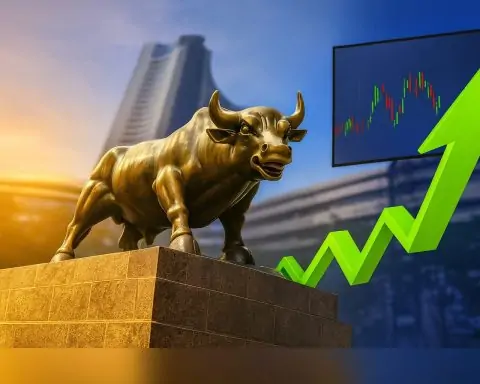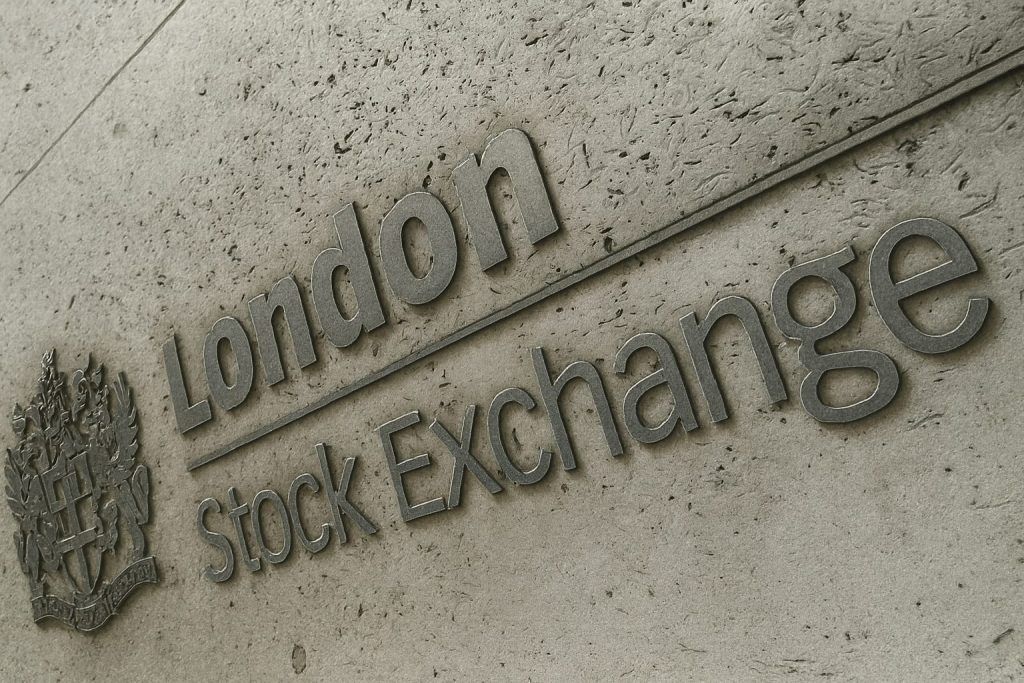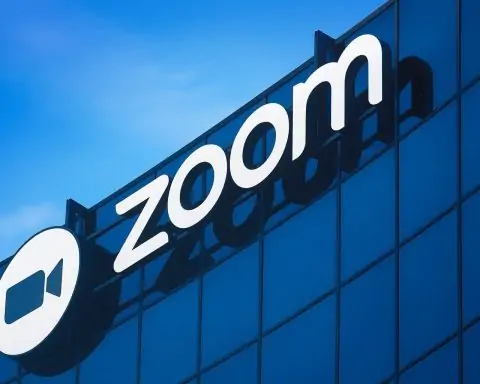Published: November 18, 2025
On November 18, 2025, AI bubble fears surged as Google CEO Sundar Pichai warned that “no company is immune” if the boom unwinds, Nvidia faced fresh scrutiny after high‑profile investor exits, and a major fund manager survey flagged an AI bubble as the top market risk. Here’s what today’s headlines really say about a possible AI bubble—and what to watch next.
A cluster of November 18 headlines brings AI bubble talk to a boil
The question “Are we in an AI bubble?” stopped being a theoretical debate today and turned into a front‑page story across business media.
In London, Alphabet and Google CEO Sundar Pichai warned that no company would escape unscathed if the AI boom were to collapse, pointing to soaring valuations and massive investment as reasons for growing bubble concerns. [1]
A live markets blog from The Guardian framed the backdrop: global stocks are on their fourth straight day of losses, Asia‑Pacific markets have slipped to one‑month lows, and speculative assets such as Bitcoin are slumping as investors re‑price tech risk and question whether AI valuations have overshot. [2]
At the same time, a new Bank of America fund manager survey—released today—reports that an “AI bubble” is now the single biggest tail risk identified by global investors, even as they continue to pile into equities. [3]
Add in mounting anxiety around Nvidia after a string of big investors sold out, and fresh think‑pieces and podcasts titled some version of “Is the AI bubble about to burst?”, and November 18, 2025 looks like a clear inflection point in the AI narrative. [4]
Today’s key developments: why AI fears flared now
1. Pichai’s warning: “no firm is immune”
In an interview highlighted by Reuters and echoed in UK media, Sundar Pichai called the current AI investment cycle an “extraordinary moment,” but warned that there is some “irrationality” in today’s boom and that if it snaps, every company would feel it. [5]
His point is simple but powerful: AI is no longer a niche sector. It underpins cloud computing, advertising, productivity software, chip manufacturing, cybersecurity, industrial automation, and more. If the AI trade unwinds sharply, it’s not just a handful of startups or GPU vendors at risk—it’s the broader corporate and financial system.
2. Fund managers call “AI bubble” the top tail risk
Bank of America’s November survey of 172 fund managers overseeing $475 billion in assets paints a picture of markets that are all‑in on risk while nervously eyeing the exit. [6]
Key details:
- Cash levels have fallen to 3.7%, triggering BofA’s traditional “sell signal”—a sign that investors are running light on dry powder.
- Managers are net 34% overweight global equities, the highest since February, and the most overweight commodities since 2022.
- A record 63% say equities are overvalued, yet they’re still long.
- Crucially, 45% cite an AI bubble as the biggest tail risk, and the “long Magnificent 7” trade (the dominant US mega‑cap tech names) remains the most crowded position in the world.
In other words: investors know they’re exposed, think things are expensive, but feel compelled to stay in the game as long as AI momentum holds.
3. Nvidia in the spotlight after major investors exit
Nvidia sits at the centre of almost every AI bubble conversation—and today that spotlight got harsher.
- Regulatory filings show that Peter Thiel’s hedge fund, Thiel Macro, sold its entire Nvidia stake—around 537,742 shares, worth roughly $100 million at the end of Q3. [7]
- Just days earlier, SoftBank disclosed that it had sold its Nvidia stake for about $5.8 billion, even as it continues to invest heavily in OpenAI and other AI projects. [8]
- Economic Times and other outlets describe these moves as amplifying worries that the AI stock frenzy “may have reached its peak,” with trillions of dollars of AI‑linked capex now perceived as vulnerable to an earnings disappointment. [9]
Nvidia’s upcoming third‑quarter earnings report, due this week, is now framed as a kind of global referendum on AI demand: if orders and backlogs remain explosive, bubble talk might cool. If growth falters, it could become a catalyst for a larger re‑rating.
4. Global media lean into the “bubble or breakthrough?” framing
Across time zones, today’s coverage carries a similar headline:
- “AI frenzy divides global market experts: Is it a breakthrough, bubble or brewing credit risk?” – Moneycontrol, weighing FOMO against fears of a leverage‑driven correction. [10]
- “Is AI’s bubble about to burst?” – Financial Newswire, highlighting asset managers hunting for opportunities while hedging downside risk. [11]
- “Is the AI bubble about to burst, and what’s driving analyst jitters?” – Euronews, which stresses not just valuations but also an emerging bottleneck in energy and data‑center capacity. [12]
The tone varies, but the central question is the same: is this the top—or just a messy middle chapter in a much longer AI story?
Are AI valuations really in “bubble territory”?
Comparisons to the dot‑com era have become unavoidable. But are they accurate?
A recent CBS News analysis notes that this year’s gains in the S&P 500 are heavily concentrated in the “Magnificent 7” mega‑cap tech names—Alphabet, Amazon, Apple, Meta, Microsoft, Nvidia and Tesla—which now make up about 37%of the index’s total value. [13]
However, Goldman Sachs data cited in that piece suggest that the median price‑to‑earnings ratio for today’s “Magnificent 7” is roughly half the level reached by the largest tech stocks at the peak of the late‑1990s dot‑com bubble. [14]
Federal Reserve Chair Jerome Powell echoed that nuance in an October press conference when asked directly about an AI bubble. His answer, paraphrased: unlike many 1990s dot‑com darlings, today’s AI leaders actually generate substantial earnings and cash flow. [15]
So valuations are rich—but not obviously as extreme as in 1999.
Still, under the surface, the numbers are eye‑popping:
- A Duke University DeepTech analysis estimates that $40 billion was invested into data‑center build‑outs in a single month—June 2025. [16]
- AI startups have raised about $192.7 billion in 2025 alone, making up the majority of global venture capital investment, often at revenue multiples higher than those seen in the dot‑com era, even for pre‑revenue firms. [17]
- The Federal Reserve’s own research notes that US venture investment in AI startups since 2012 totals roughly $600 billion, more than twice the EU and UK combined, while China has plowed roughly $184 billion of state‑linked funds into AI firms via local government vehicles—plus another $138 billion through a newly announced national guidance fund for AI and quantum tech. [18]
At the same time, productivity pay‑offs remain patchy. Duke’s review highlights an MIT study showing that most enterprise AI pilots still fail to deliver measurable returns, with many projects stalling before reaching production scale. [19]
That mix—huge capital flows + concentrated winners + uneven real‑world returns—is textbook bubble fuel.
Inside the “real” AI bubble: the GPU and compute feedback loop
One of the most insightful pieces published today comes from Simplico, which argues that the “real AI bubble” is less about chatbots and more about compute. [20]
They describe a simple loop:
AI labs → need more compute → cloud providers buy more GPUs → Nvidia sells more chips → Nvidia’s valuation rises → AI labs raise more money → repeat.
Because model sizes keep growing—each new generation often needs 2–10x more compute than the last—this loop has created what the author calls “the largest technology capex boom in history.” [21]
A few crucial details from that analysis:
- Nvidia is estimated to hold around 95% market share in AI accelerators, with record margins and enormous demand backlogs.
- Big cloud providers (Microsoft Azure, AWS, Google Cloud, Oracle) are spending tens of billions of dollars to secure GPUs and build “AI factories.”
- OpenAI, Anthropic, xAI and other frontier labs act as the “engines” of the bubble by demanding ever‑larger GPU clusters.
In short, the current AI cycle looks less like a consumer‑app bubble and more like an industrial capex bubble centered on chips, data centers, and power.
Not just hype: a supply‑side crunch in power and infrastructure
If bubbles are usually about demand that never materializes, the AI story is stranger.
Euronews today highlights a growing view among macro investors: AI’s problem isn’t demand, it’s supply. [22]
Key points from their reporting:
- AI cloud provider CoreWeave has seen its revenue backlog nearly double quarter‑over‑quarter to about $55.6 billion, yet it has cut its 2025 capex guidance by up to 40% because power infrastructure can’t be built fast enough. [23]
- Oracle, with a reported $455 billion revenue backlog and high‑profile contracts with Meta, OpenAI and xAI, is still “waving off customers” due to capacity constraints, according to CEO Safra Catz. [24]
- Investor Craig Shapiro sums up the new moat: control over land, power, water and grid access, not just GPUs.
This “backlog paradox”—contracts and capital in hand, but not enough electricity or substations to deliver—suggests that even if AI equity prices correct, the underlying build‑out will likely continue, just as fiber‑optic networks laid during the dot‑com boom continued to power the internet long after Pets.com disappeared. [25]
What regulators and risk officers are really worried about
Financial stability watchdogs aren’t ignoring the boom.
- The Bank of England has warned that a sharp correction in AI‑related stocks could trigger a meaningful market slump, calling the spillover risk to the UK financial system “material.” [26]
- The IMF’s chief economist, Pierre‑Olivier Gourinchas, has compared the AI investment wave to the dot‑com boom, suggesting a bust is plausible but unlikely to trigger a systemic crisis because the boom is more equity‑financed than debt‑financed. [27]
Corporate risk disclosures tell a related story. A recent Business Insider analysis found that 418 US‑listed companies valued at more than $1 billion have added AI‑related risk factors to their SEC filings this year—a roughly 46% jumpfrom 2024 and nearly nine times 2023 levels. [28]
These filings warn that AI could:
- Generate false or biased outputs that damage reputations
- Compromise security and privacy
- Infringe on intellectual property or other rights
Yet those same disclosures typically say that not adopting AI could be just as dangerous competitively. AI is framed as both an opportunity and a “known unknown” that boards can’t avoid. [29]
Outside markets, the World Economic Forum’s 2025 Global Risks Report ranks misinformation and disinformation, amplified by AI, as the most severe short‑term global risk. [30] And fresh research from Dartmouth, covered by Euronews Next today, shows that AI systems can now mimic human responses in online opinion polls so convincingly that it is increasingly difficult to know whether survey data comes from real people. [31]
Put together, regulators are worried about two bubbles:
- A valuation bubble in AI‑exposed assets.
- A trust bubble in information, where AI‑generated content overwhelms traditional signals before institutions are ready.
So… is this an AI bubble?
The honest answer—echoed by many of the experts quoted over the past month—is: yes and no.
From a bubble‑theory perspective, we’re clearly deep into what economist Hyman Minsky would call the “euphoria / profit‑taking” phase:
- Capital is flooding in: hundreds of billions into chips, data centers, and AI startups. [32]
- Expectations are sky‑high: AI and “Magnificent 7” names dominate index performance and corporate narratives. [33]
- Big names are hedging their enthusiasm: Jeff Bezos calls today’s environment an “industrial bubble,” and Sam Altman openly says investors are “overexcited” and that someone will lose a “phenomenal amount of money.” [34]
- Contrarian investors like Michael Burry have placed very public short bets against Nvidia and other AI leaders, essentially calling time on the boom. [35]
At the same time, key differences from classic bubbles are hard to ignore:
- The leading companies—Nvidia, Microsoft, Alphabet, Amazon, Meta—are profitable giants, not pre‑revenue dot‑com experiments. [36]
- There is documented, structural demand for AI compute and services, with multi‑year revenue backlogs and bottlenecks in power, not a lack of customers. [37]
- Much of the spending is equity‑financed, which reduces the risk of a 2008‑style credit crisis if valuations fall. [38]
A good way to reconcile this is the view, articulated by several analysts and newsletters this month, that AI will rise first, crash second, and then reshape the world anyway. [39]
In other words: parts of today’s AI market almost certainly are a bubble. Many companies, infrastructure projects, and speculative tokens tied to AI branding will not survive a tougher funding environment. But the underlying technology—and the infrastructure being built right now—will likely outlast any market correction, just as fiber optics and e‑commerce did after 2000.
What to watch next (beyond today’s headlines)
For investors, policymakers and operators trying to navigate this moment, November 18’s news flow suggests a practical checklist:
- Nvidia’s earnings and guidance
- Watch how much of its demand comes from a small set of hyperscalers and labs vs. more diversified enterprise customers.
- Look closely at any commentary on order backlogs, pricing, and alternative GPU suppliers such as AMD. [40]
- Capex vs. productivity
- Track whether the enormous AI capex shows up in real productivity gains. Studies so far suggest a “J‑curve” where benefits arrive with a lag—and many projects fail. [41]
- Power and infrastructure constraints
- Policymakers and utilities are turning into accidental king‑makers. Where grid capacity is scarce and permitting is slow, AI build‑outs may stall regardless of valuations. [42]
- Regulatory and disclosure trends
- The rapid rise of AI risk factors in SEC filings signals that boards now treat AI as both critical and hazardous. Expect evolving standards around transparency, model governance, and safety. [43]
- Credit markets and private capital
- BofA’s survey flags private equity and private credit as the most likely source of a future systemic credit event. If AI‑linked projects are heavily financed in those markets, that’s where stress could appear first. [44]
Bottom line
November 18, 2025 didn’t create AI bubble fears—but it crystallised them.
Between Pichai’s “no firm is immune” warning, survey data showing that an AI bubble is now the market’s top tail risk, and high‑profile exits from Nvidia by marquee investors, today marks a shift from uncritical euphoria to something closer to nervous realism. [45]
Whether this proves to be the peak of the AI trade or just a pause before the next leg higher will depend on three things: earnings, infrastructure, and trust. If AI companies can turn backlogs into profits, if grids and data centers can keep up, and if societies can manage the new risks AI introduces, then today’s bubble talk may look, in hindsight, like a mid‑cycle scare.
If not, November 18, 2025 may be remembered as the day the air started hissing—quietly—out of the AI balloon.
References
1. www.reuters.com, 2. www.theguardian.com, 3. www.reuters.com, 4. www.moneycontrol.com, 5. www.reuters.com, 6. www.reuters.com, 7. www.livemint.com, 8. www.livemint.com, 9. economictimes.indiatimes.com, 10. www.moneycontrol.com, 11. financialnewswire.com.au, 12. www.euronews.com, 13. www.cbsnews.com, 14. www.cbsnews.com, 15. www.cbsnews.com, 16. deeptech.duke.edu, 17. deeptech.duke.edu, 18. www.federalreserve.gov, 19. deeptech.duke.edu, 20. simplico.net, 21. simplico.net, 22. www.euronews.com, 23. www.euronews.com, 24. www.euronews.com, 25. deeptech.duke.edu, 26. www.reuters.com, 27. www.reuters.com, 28. www.businessinsider.com, 29. www.businessinsider.com, 30. www.weforum.org, 31. www.euronews.com, 32. deeptech.duke.edu, 33. www.cbsnews.com, 34. www.reuters.com, 35. www.reuters.com, 36. www.cbsnews.com, 37. www.euronews.com, 38. www.reuters.com, 39. deeptech.duke.edu, 40. simplico.net, 41. deeptech.duke.edu, 42. www.euronews.com, 43. www.businessinsider.com, 44. www.reuters.com, 45. www.reuters.com








